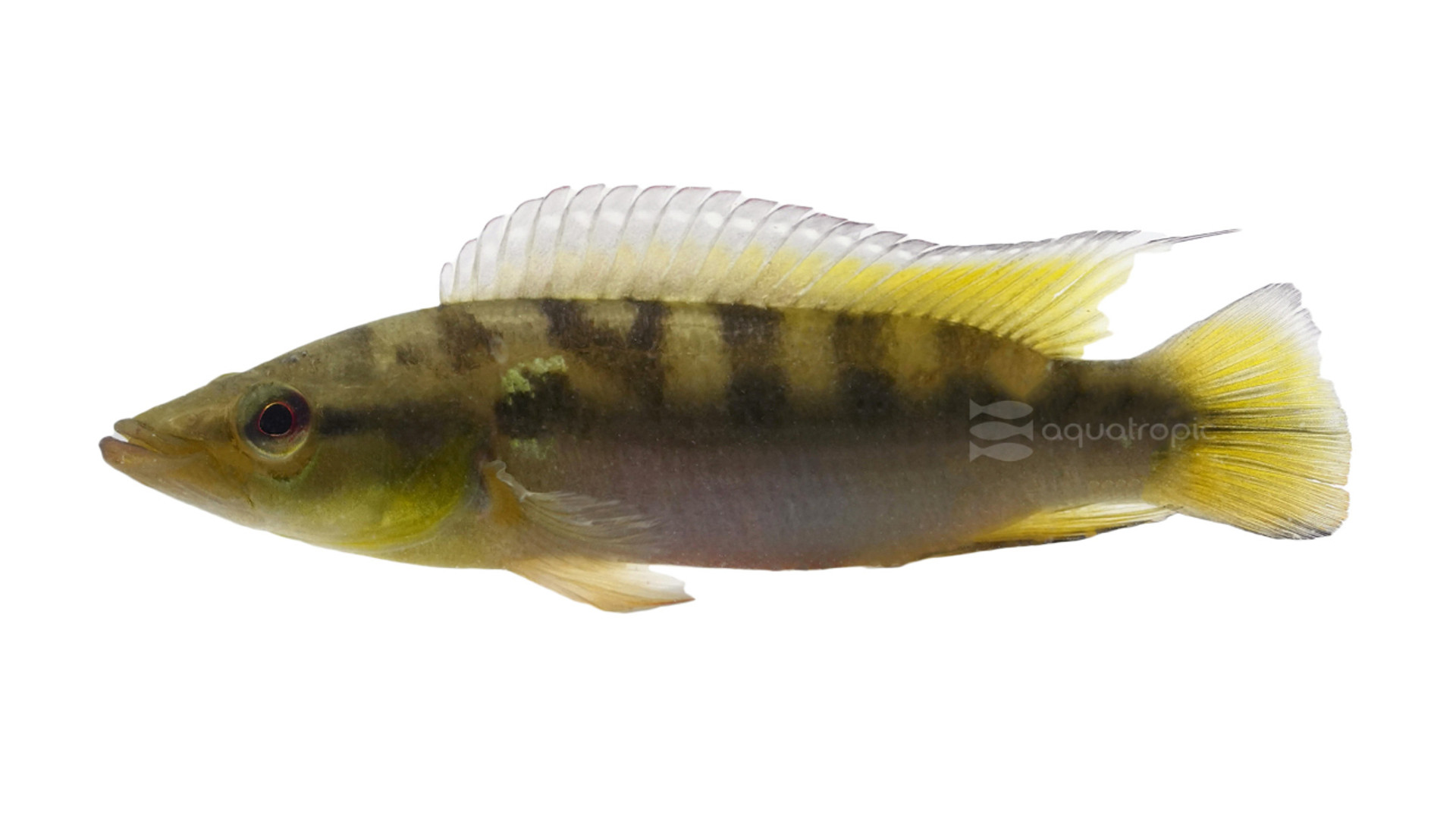Star Spangled Menezisis

If you've never kept a Pike Cichlid (what we call all the fish in the genus Crenichichla), then today's species spotlight offers you an insight into a good place to start. The Menezisi Pike Cichlid (Crenichichla menezisi) is also sometimes called the Spangled Pike Cichlid. They are a hardy and attractive fish that doesn't get overly large, maxing out at just under eight inches, with a much more common adult size of around five or six inches. They are common fish throughout their native range in the northern half of South America.
Like most Pike Cichlids, Menezisis aren't overly affected by water parameters and can be kept in moderate pH (6.5-7.5) displays regardless of water hardness. The temperature should be in the mid 70s Fahrenheit. They are also relatively tolerant of nitrogen-based compounds, but hobbyists should still try to keep their tanks ammonia and nitrite free, with nitrates under 20 ppm. As this fish likes large meals, it tends to generate large waste streams and so we recommend frequent water changes and excellent filtration to accomplish good water quality. Extended dips in water quality will cause this fish to lose color and vigor.
This is a larger aquarium fish, and as such, will need an aquarium that is at least four feet long, and ideally 75 gallons or more. Obviously bigger would be better. If you are planning on keeping more than one (something we don't necessarily encourage), go for aquariums with larger footprints and offer each specimen a dedicated hiding place like a clay pot or a PVC tube to call home.
All Crenichichla will root around and change their environments and the Menezisi will likely spend a lot of time redecorating the space; digging up sand, moving smaller rocks and other décor seems to be a favorite activity. As such, they aren't great matches for planted aquaria as any rooted plant will likely get dug up inadvertently. Better choices for plants are things that are attached to unmovable rocks and wood.
Menezisi Cichlids are aggressive but can be kept with other larger fish of similar dispositions. Good choices would be other larger South American Cichlids. These are ambush predators, and in the wild subsist mostly on small fish and inverts. This behavior will continue in your aquarium and so smaller fish, even those up to a couple inches long are likely to become food for them. Their opportunistic feeding style makes them a very easy fish to feed in captivity, though perhaps a bit too easy if you are trying to keep them with small fish (again, something we do not recommend.) These fish generally take sinking Nutramar pellets quickly after acclimation, and even super picky fish can be enticed to eat with things like feeder fish and worms. These live or frozen foods can continue to be fed as treats and to enhance the diversity of their diet.
Crenichichla menezisi can be bred in captivity, but this process is hard to scale to up commercial production. Males can be differentiated by from females as the females will stay smaller and have a pinkish hue to their belly where males will have a herringbone marking on their sides and their tails will often have a white margin. When pairs form, this species will become much more aggressive, and the pair (or all the other fish) will need to be removed from the display. Adults will use the caves / pots / PVC you provided for nesting. Water quality should be pristine at this point, and large water changes can help trigger spawning activity.
There is some correlation with softer water and breeding success for other species of Crenicichla, and this also might be worth imitating. Large amounts of live food have also successfully been used as a trigger. Males will guard the cave and the female will tend to the eggs, which should hatch in less than a week and the fry should be free swimming a few days later. The fry will differentiate quickly on size, and these should also be separated from each other if you would like to keep an even sex distribution among the fry. The fry can take a fairly large food fairly quickly and should eat newly hatched brine shrimp (or similar sized food) without issue.
Because this process is so difficult to scale, Menezisi Cichlids are almost universally wild caught, which limits supply. When you combine this with their voracious appetite for smaller fish limits their usage in any community display and this is somewhat of a shame. They are easy to keep, very fun to feed and interactive both with their keepers and their environments. If you are into neat predator fish, that don't get ridiculously big and are somehow still rare in the hobby, Crenichichla menezisi makes a great choice. If you're looking for a very different fish for your south American Cichlid tank, Menezisi Cichlids are a must! Head over to your Local Fish Store and ask about getting you a sustainably sourced specimen from Aquatropic today!